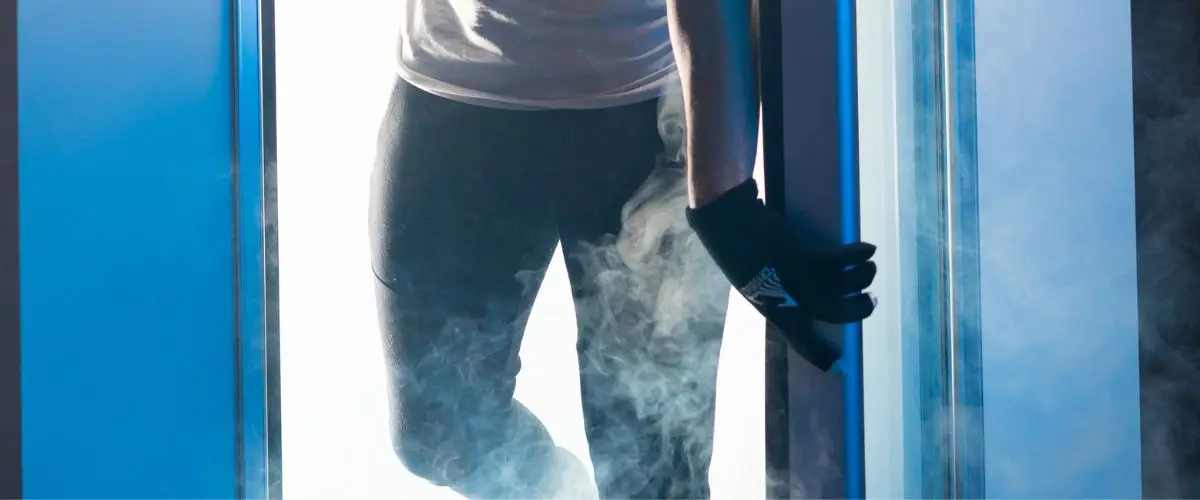It is without doubt that recovery for exercise is just part of the process of building and maintaining strength and endurance. And recovery strategies have been tried and tested by athletes and scientists world-wide. But in most recent years, the use of whole body cryotherapy has come into its own as a new age method for fitness recovery.
The method involves a short period of between 1 and 4 minutes where the body is put under extreme cold stimulation where temperatures range between -60 and -195 degrees celsius.
The main effects of the cold immersion include stimulating the nervous system to reduce muscle tension and inflammation, increase circulation and as a result facilitate post-exercise recovery.
So how does it work?
After exercise, muscles are shortened, lactic acid builds up, and in particular with strength and conditioning workouts, muscles experience micro-tears which cause that pain we love to hate – DOMS. This is delayed-onset muscle soreness which is characterised by intense pain, swelling and loss of muscle function 24-48 hours after exercise. When entering a cryotherapy chamber the extreme cold temperature immediately stimulates our cold receptors, blood vessels narrow to maintain as much heat as possible and the blood rushes to our major organs to protect them. The sympathetic nervous system is activated and noradrenaline is released – a key hormone in relieving pain symptoms. So almost instantly, that pain or soreness is somewhat diminished by the noradrenaline. And this isn’t the only hormone working in this way; the cold also triggers the release of norepinephrine – the ‘feel good’ hormone which also aids in pain reduction and inhibits pro-inflammatory processes.
When the body is then returned to normal external temperatures, these hormones stay present in the body and the blood vessels dilate allowing the blood to circulate not only more freely but with higher levels of oxygen and nutrients. This means our fatigued muscles are being flushed with rich blood filled with anti-inflammatory proteins, white blood cells and a plethora of pain and stress relieving hormones resulting in the elimination of metabolic products that built up from exercise. Swelling is reduced as circulation improves and this new blood flow induces fast cellular generation repairing the muscle tears and minimising those DOMS effects.
The extreme cold temperature also induces the release of endorphins – the happy hormone! These are yet another example of stress-relievers that boost mood as well as diminish pain, albeit temporarily. And the feeling of these hormones can last up to 8 hours after cryotherapy so you are likely to feel a lot fresher and suffer less soreness and in turn have a smoother recovery after exercise with the addition of your post-workout cryotherapy session.
But how soon after exercise can I use cryotherapy?
This is an ongoing debate as there are conflicting studies that suggest optimal recovery and optimal gains are affected by how long after exercise you subject your body to these cold extremes.
When we work out, muscle glycogen levels are depleted so it is vital for rapid recovery that these are replenished as this initiates muscle tissue repair and muscular adaptations.
Given that the resynthesis of muscle glycogen is most efficient within the first hour after exercise, cold treatments in this time may hinder that recovery and impair future performance. To add to this, the lymphatic system works to clear toxins from the body (essential post-exercise) – something that cold therapy will inhibit and so immediate cryotherapy may prevent the body’s natural ‘getting stronger’ process.
Research suggests that cryotherapy straight after exercise many reduce your body’s response to exercise, and that the best way to encourage muscle repair, cell renewal, circulation and reduce inflammation is to wait 1 hour before stepping into cold therapy. This gives the body time to naturally adapt after working out and in this way you can experience the full benefits of cryotherapy, including improved sleep, increased range of movement and enhanced recovery.
However, if your training is endurance or cardio based, it is suggested that your cold immersion should be carried out as soon as possible after completing your workout in order to reduce inflammation.
So in a nutshell – cardio/endurance training? Straight to cryotherapy. Strength/resistance training? Wait 1 hour!
Sources:
Bouzigon et al (2021), Crystimulation for Post-Exercise Recovery in Athletes: A Consensus and Position Paper.
https://www.ncbi.nlm.nih.gov/pmc/articles/PMC8652002/
Next Health, How Cryotherapy can Help with Exercise Recovery. https://www.next-health.com/post/how-cryotherapy-can-help-with-exercise-recovery
Ivy, J. (2004) Regulation of Muscle Glycogen Depletion, Muscle Protein Synthesis and Repair following Exercise. https://www.ncbi.nlm.nih.gov/pmc/articles/PMC3905295/
Cheng, A. (2018) Cooling down the use of Cryotherapy for Post-Exercise Skeletal Muscle Recovery. https://www.tandfonline.com/doi/full/10.1080/23328940.2017.1413284
Haymer, J. (2020) Should I Exercise Before or After Taking -85 Whole Body Cryotherapy Chamber. https://cryojuvenate.com/should-i-exercise-before-or-after-taking-85-whole-body-cryotherapy-chamber/#:~:text=Research%20suggests,your%20body’s%20response%20to%20training.





